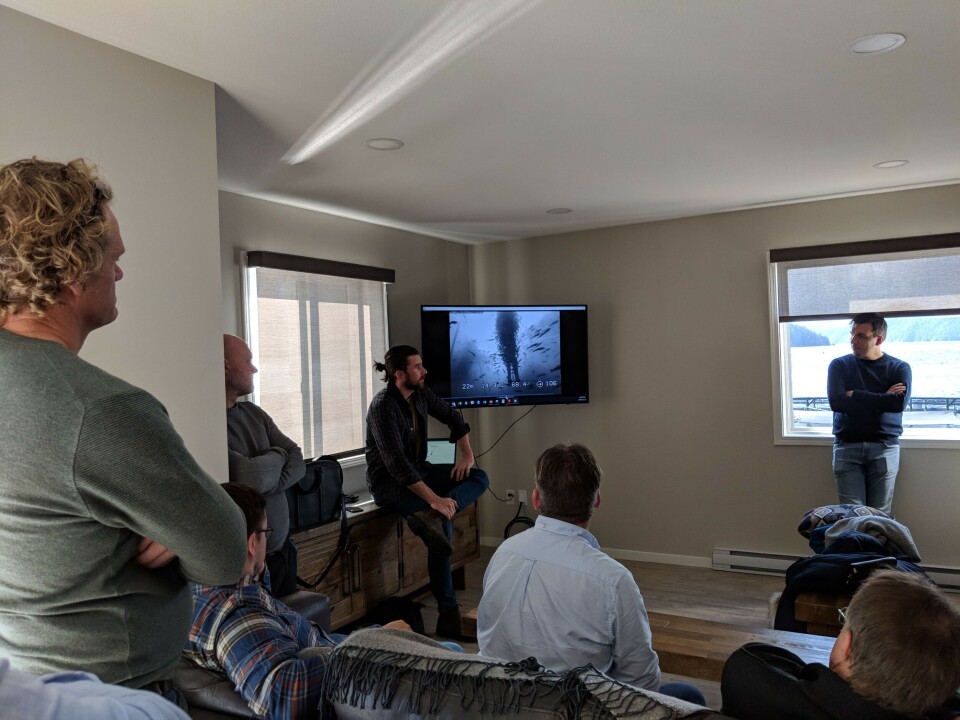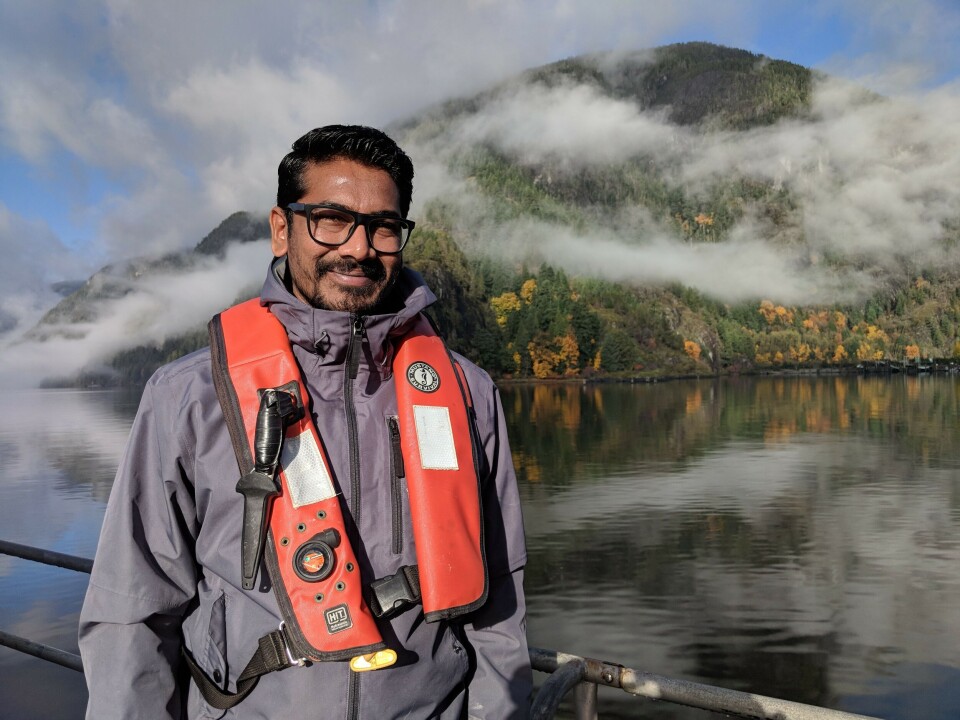
Monitoring and mitigation key themes during HAB study trip
Members of the Norwegian Seafood Association (NSA) visited a Grieg salmon farm while on a study trip to British Columbia where they learned about harmful algal blooms (HABs).
The NSA study group spent time at Greig Seafood’s Atrevida salmon farm located in the waters of Nootka Sound east of Campbell River. Grieg’s environmental monitoring specialist, Liam Peck, presented the company’s strategies for dealing with HABs.
Peck’s main message was that data collection and mitigation systems are the fundamental keys to managing a HAB event.

Tools and protocols
He explained that one of the tools used to manage a HAB event or avoiding a potential event is data collection.
“Internal data collection requires the standardisation of tools and equipment. Each site in British Columbia is provided with the same tools and protocols for sampling and monitoring. Each site is provided with a vertical water sampler, plankton tow, sample bottles, rafter slides, glass cover slips, salinity refractometer, oxygen and temperature meter, microscope with multiple objectives and camera, laptop with internet connectivity,” said Peck.
HAMP
In British Columbia there are two ways of monitoring HABs. There is internal data collection done by companies like Grieg and there is third party data collection done through the Harmful Algae Bloom Monitoring Program (HAMP).
HAMP has monitored between 11 and 28 coastal sites in British Columbia since 2006. This includes monitoring of 15 sites weekly from spring to autumn. “Grieg currently has four sites in the program from four different regions.”

Water samples
During the day water samples are taken by employees working on the farms and sent to Samudra Environmental Consulting (SEC) for microscopic analysis. SEC is a Campbell River monitoring company that can turn around results in a matter of hours. Water samples are taken from the water column at 1m, 5m and 10m depths.
Those samples are then analysed by SEC, which will assess the overall plankton level and balance of different phytoplankton groups, plus enumeration of harmful and dominant species. “This data is reported back to the farm companies. The data is also compiled for all HAMP sites weekly and annually,” said Peck.
Sophisticated programs
Jay Pudota is an environmental consultant and owns SEC. He works with all the salmon farming companies in the Campbell River area. “Our plankton monitoring here is one of the most sophisticated programs. Nobody else has this and that's why people from Chile, Scotland and Norway come here to learn about plankton monitoring,” he said.
Pudota runs a training program in which he teaches salmon farm employees how to collect water samples and identify issues in real time. “These guys know how to use the equipment. These guys know how to monitor the plankton. That's why it’s the best program. The training on the identifying the species is something only we do.”
Plankton Portal
Grieg has also developed a “Plankton Portal” for its farms. “It’s a new data collection system that was designed and implemented to collect higher resolution data that could be used to make informed decisions. Since May 2017, Grieg has increased the resolution of harmful plankton data internally,” added Peck.
Today, the company collects and stores quantitative data for 20 species of harmful algae through the Plankton Portal. Grieg routinely tests water at its sites. “Algae data is collected and paired with environmental data which includes temperature, salinity, and oxygen conditions,” said Peck. The data is collected at a designated location at each site and the samples are collected twice daily as a minimum standard.






















































